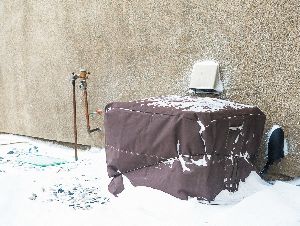Colder temperatures are just around the corner, which means it’s time to winterize your AC unit. While turning it off might seem simple enough, there are several steps that every homeowner should take. These will help to preserve functionality and avoid issues from developing in the future. Here’s a closer look to determine where best to start.
4 Key Tips for Winterizing Your AC Unit
1. Clear Away the Debris
Leaves, twigs, and other types of outdoor debris can collect around the condenser, which is usually found along the side of the house. If these pile up too high, they can restrict the airflow and cause mold to grow within the unit. Carefully rake away the loose bits of material to maintain at least two feet of clearance. Trim back any weeds and shrubs that may be growing just a bit too close to the vents.
2. Set Up an Inspection
Having a heating and cooling professional perform an in-depth inspection is the key to winterizing an AC unit. It reveals issues that might require immediate repair and ensures that there are no leaks. This reduces the risk of delays and makes it possible to turn on the system at the start of the season.
3. Install a Protective Cover
Allowing snow to pile up on top of the condenser will introduce moisture to the mechanisms and increase the risk of rust. Covering it with a sheet of plywood should provide the necessary protection. You could also wrap a tarp around the exterior, securing it in place with a set of bungee cords to keep it from blowing away.
4. Add Insulation
Even though your cooling system isn’t currently in use, there’s a chance that freezing temperatures could jeopardize the condition of its outdoor connections. Fully encase any visible tubes and pipes with a layer of insulating foam to create a barrier. This will absorb most of the cold and ensure that they remain at a more consistent level.







